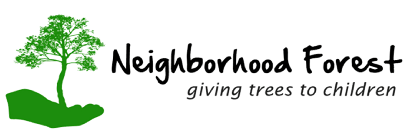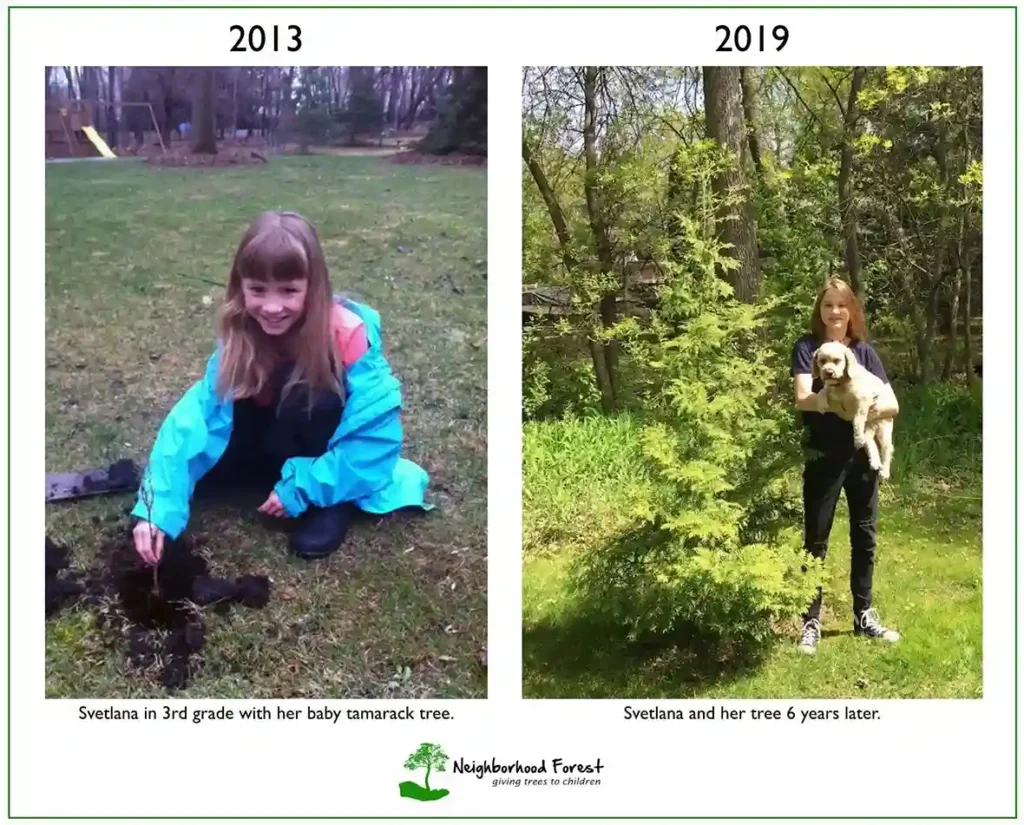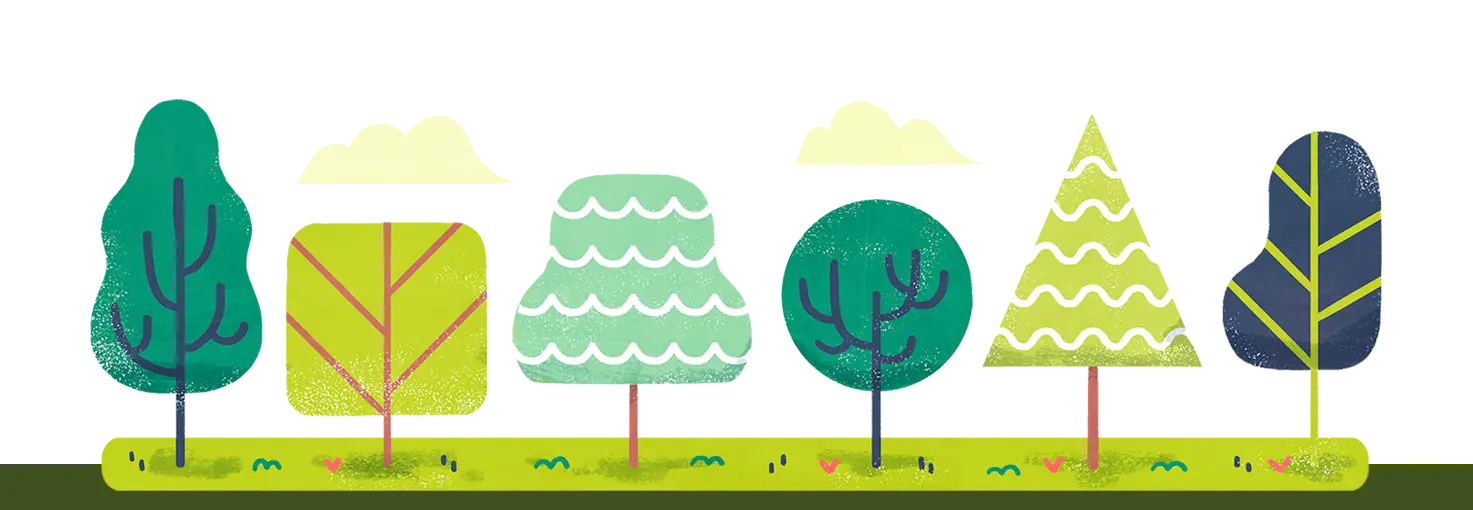Our Mini Food Forest Program introduces children to permaculture by teaching them how to care for a mini food forest—a self-sustaining, multi layered ecosystem with edible and medicinal plants. Kids learn about regenerative gardening and how plants work together to attract pollinators, improve soil health, and provide food.
Through our corporate partners, we are bringing this program to life in communities across North America. Learn more in the video below, highlighting our partnership with Mortenson.
Curious how your company can get involved? Reach out to us at info@neighborhoodforest.org
Every October, the world pauses to reflect on food security and sustainability. World Food Day 2025, observed on October 16, serves as a reminder that access to nutritious food is both a basic human right and a global challenge. For families and educators, this day is also an opportunity to inspire children to engage with nature, food systems, and the future of the planet.
Neighborhood Forest’s Mini Food Forest Program
As World Food Day 2025 approaches, there has never been a better time to inspire children to plant for tomorrow. Neighborhood Forest is dedicated to empowering kids by giving them free trees and edible plants every Earth Day, helping them connect with nature in their own neighborhoods, homes, and schools.
A mini food forest is a playful, hands-on way for kids to learn responsibility, care for the earth, and discover that when we nurture nature, it gives back to us. With roots in permaculture ethics (earth care, people care, and fair share), each mini forest allows a child to experience pride, ownership, and joy in tending their own little piece of the planet.
Here are some common questions about mini food forests:
-
- What is a food forest? It’s a small, layered ecosystem of edible plants designed to mimic a natural forest.
- How does a mini food forest differ? It is a potted setup with three permaculture-friendly edible plants, perfect for growing indoors or outdoors.
- Why should kids be involved? Children’s garden projects teach responsibility, resilience, and an appreciation for nature.
- Do you need a big yard? No. A food forest can fit into many spaces — even a small backyard garden or a sunny windowsill in your home.
- Is it complicated to maintain? Not at all. Once established, the food forest design is largely self-sustaining.
- How is this connected to World Food Day? It highlights local, hands-on solutions to global food challenges.
By connecting kids to the soil and seeds, we help them learn not just how to grow food but also how to nurture communities and ecosystems.
How Food Forests Work
A food forest is an intentional ecosystem designed to mimic the layers of a natural forest with a canopy, understory, shrubs, herbs, ground cover, roots, and vines, but every layer provides something edible or useful. Think apples in the canopy, berry bushes in the shrub layer, mint on the ground, and carrots underground. Because the plants are chosen to support one another, food forests encourage biodiversity and symbiotic relationships, creating self-sustaining systems that require little maintenance and few unnatural interventions once established.
This concept of food forests can be adapted for urban gardening and scaled to fit almost any space, even a single pot. Whether large or small, food forests are not only beautiful but also practical, offering children a living classroom where they can explore sustainable gardening firsthand.
Schools and communities across North America are already exploring these practices, with support from initiatives such as Neighborhood Forest’s mini food forest program.
Benefits for Kids
In addition to fruits and vegetables, food forests provide children with life lessons that go far beyond the garden bed:
-
- Practical Skills: Kids learn how to grow food while understanding soil, water, and compost cycles.
- Connection to Nature: Planting trees and tending gardens help children develop a lifelong love of the environment.
- Healthy Habits: Tasting food they grew themselves often leads children to eat more fruits and vegetables.
- Confidence and Resilience: Watching seeds sprout and trees mature gives kids a sense of accomplishment and patience.
- Community Engagement: When a children’s garden project involves family or classmates, it strengthens social bonds.
The benefits ripple outward. Kids who engage with food forests are more likely to value planting for the future and support sustainable practices as adults.
How to Start a Food Forest With Kids
Getting started doesn’t require expertise or large spaces. Families and schools can create food forests step by step. Here’s how:
-
- Choose a Location: Look for a spot with plenty of sunlight (at least six hours a day), healthy soil, and easy access to water. A small patch of land, the corner of a schoolyard, or even a sunny strip in your backyard can become the foundation for a thriving mini food forest.
- Plan the Layers: A good food forest design includes:
- Canopy (fruit trees such as apples or pears)
- Shrubs (berries, currants)
- Herbs (basil, mint)
- Ground cover (clover, strawberries)
- Roots (carrots, onions)
- Vines (beans, grapes)
- Plant Together: Involve kids in digging holes, planting seeds, and watering.
- Keep It Simple: Start with a handful of plants and expand each season.
- Observe and Celebrate: Encourage kids to journal, draw, or photograph their progress.
Starting and maintaining a mini food forest is even easier, since it follows the same basic steps on a smaller scale. Instead of occupying a patch of land, a mini food forest can be contained in a single pot with three permaculture-friendly edible plants. This smaller version still teaches the same lessons about layers, plant relationships, and sustainable gardening, but it’s more manageable and accessible for young kids.
Learning Opportunities Beyond Gardening
Mini food forests become outdoor classrooms for much more than planting:
-
- Science: Children witness pollination, soil biology, and water cycles in real time. Learning about trees and their health benefits helps deepen their understanding of the natural world.
- Math: Measuring plant growth, spacing crops, and tracking harvest yields offer hands-on lessons.
- Nutrition: Kids learn where food comes from and how fresh produce benefits their health.
- History and Culture: They discover how communities have always relied on local food systems.
- Social Responsibility: Sharing the harvest with neighbors or local pantries instills values of generosity.
These gardening projects help prepare young learners to see themselves as stewards of both land and community.
About Neighborhood Forest
Neighborhood Forest is a nonprofit organization dedicated to giving every child the joy of planting and watching a tree grow. Since 2010, we’ve partnered with schools, libraries, and youth groups to distribute free trees to children across North America every Earth Day. Our mission is to instill a sense of wonder and responsibility toward the environment in young hearts and minds.
This past Earth Day, over 112,000 kids at 1,500 institutions across North America received their very own trees and plants. Some even wrote names for their mini food forests, making them truly their own. If your institution hasn’t yet participated, now is the perfect time to join the movement and be added to our list for Earth Day 2026. Together, we can raise a generation that not only plants trees but also grows a culture of care, resilience, and sharing.
Here are some ways you can get involved:
- Sign up your school, library, youth group, or organization to receive free trees.
- Donate to support our mission and help us reach more children.
- Learn more about our story and how we’re inspiring future generations.














